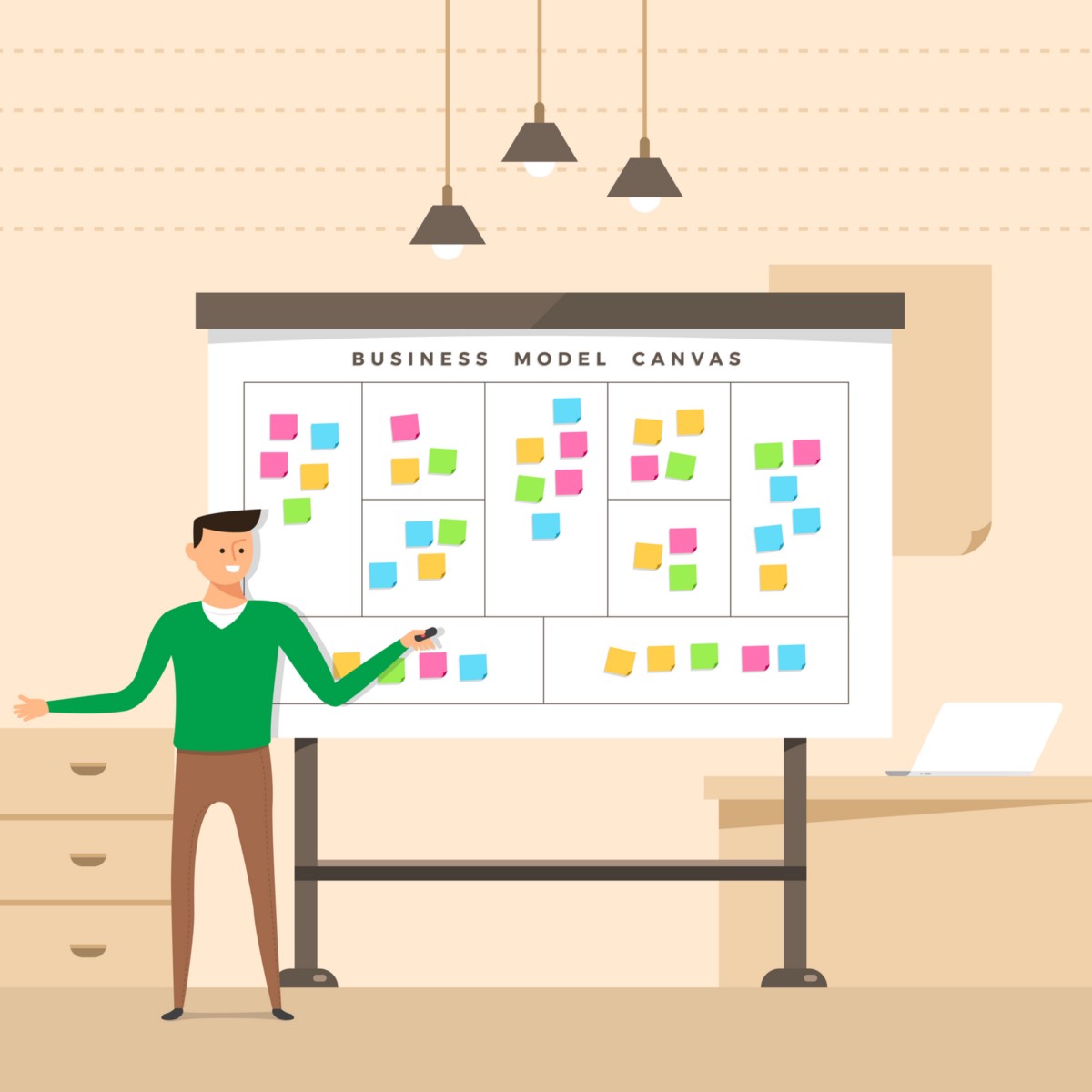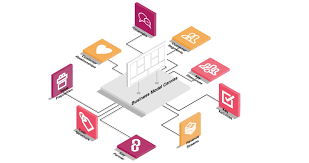Hello!
A business model canvas is a useful tool for understanding a business model in a systematic and easy-to-understand manner. Through this model canvas, you’ll learn more about your customers, what products offered are supplied through which channels, and also how your business earns a profit.
You can now utilize the Business Model Canvas Template and fill it in according to the given instructions below. We have tried to give the best possible step-by-step guide so that you don’t have trouble making your own. Continue reading to learn more about it.
Steps to create and fill your canvas
Step 1: Identifying and naming the business’s objective
It is impossible to tell if a model is excellent or not unless it has a clear, understandable purpose.
 This could be anything you want, such as:
This could be anything you want, such as:
- to increase our parent company’s financial stability
- To make the job-searching process more efficient
- To ensure that young people who are in danger of becoming homeless have a stable source of income.
The beautiful thing about this is that we’ve had a set of criteria for evaluating our thoughts, as well as some unique suggestions for how to achieve this goal.
Step 2: Value Propositions and Customer Segmentation
Your company revolves around your clients. Hence it is our responsibility to gain a thorough grasp of this individual to make the best product to cater to their needs.
To begin with, in the “Customer Segments” box, divide your clients into clusters and describe each one using similar features, such as students, business owners, parents, etc.
 Second, create a few helpful descriptors for each consumer segment, such as demographics such as age, race, and gender, or psychographics such as political opinions and preferences.
Second, create a few helpful descriptors for each consumer segment, such as demographics such as age, race, and gender, or psychographics such as political opinions and preferences.
While in the “value proposition” box, describe what your buyer is truly looking for, tell the reason why that matters. For example, tell how your services/products improve people’s lives to the point where they will pay for this Value Proposition happily.
Step 3: Customer Relationships and Channels
Now that we know about customers and how to serve them. It’s time to see how will we acquire the customers, how will we connect with them, and how will we maintain them.
The channels box allows us to describe how we initially meet our clients and how we provide our Value Proposition. For example, consumers may be found through Facebook or Google Ads, and customers may be served through in-person seminars or drop shipped goods.
 On the other hand, the customer connections box describes how we would be interacting with our customers:
On the other hand, the customer connections box describes how we would be interacting with our customers:
- Do we want a long-term or short-term relationship?
- Is it necessary for each client to speak with a human or to rely on technology?
- Will we have to work much harder to get new consumers or keep the ones we already have?
However, you can look up Creative Tips to Boost Your Social Media Strategy for better planning and implementation.
Note that these boxes tend to match up nicely as they can collectively aid you in identifying the best strategies for hiring and keeping our customers for coming years by assessing their needs, objectives, and preferences.
Step 4: Key Activities, Key Resources, and Key Partners
 These boxes explain how your business’s insights and how it will run, particularly operational elements that enable the Value Propositions to be realized. We would suggest you make a list of all the necessary elements, processes, and partners that allow our company to function.
These boxes explain how your business’s insights and how it will run, particularly operational elements that enable the Value Propositions to be realized. We would suggest you make a list of all the necessary elements, processes, and partners that allow our company to function.
Places, patents, people, technologies, and resources are all examples of essential resources employed on a daily basis. These assets are important, if they got lost, then you would render the business inoperable.
The processes and actions that should be accomplished before the customers may be served are known as key activities, such as sales calls, food preparation, workshop delivery, and report writing.
On the other hand, individuals and organizations who serve as key partners relieve a few of your responsibilities to you. For example, they could provide raw resources or finished products, send you consumers, or serve as a Facilitator or a sponsor.
 Learn about:
Learn about:
- Which external backers are critical to the business model’s success?
- If they had been to depart, who might make life tough for them?
Because these boxes have some leeway, consider how you can really outsource services that aren’t your central elements to a collaborator or how could you bring in things to save expense or increase performance.
Step 5: Revenue Streams and Cost Structure
The core of the canvas is that it depicts your company’s bottom line, the methods money flows through it.
 This necessitates a grasp of quantities (how our prices or costs are determined) and frequency (how frequently we receive repeat bills/customers).
This necessitates a grasp of quantities (how our prices or costs are determined) and frequency (how frequently we receive repeat bills/customers).
- Cost Structures are considered as the largest expenses; the amount of money spent, how often we spend the money, and how the expense fluctuates as sales increase and decrease. Rent, labor, raw materials, retail fit-out, advertising, and commission payments to third parties are just a few examples.
- Revenue Streams are said to be the average prices that each sort of consumer pays and how often they return. This allows us to distinguish major spenders from customers, as well as emphasize which items are bought up front vs those that are acquired over weeks and months.
Step 6: Link the Boxes
 The canvas holds us accountable for our ideas; in case we make a pledge on the right, it must also be written in the boxes placed on the left side. On another account, if we claim about pleasing consumers, it must be reflected in our Revenue Streams.
The canvas holds us accountable for our ideas; in case we make a pledge on the right, it must also be written in the boxes placed on the left side. On another account, if we claim about pleasing consumers, it must be reflected in our Revenue Streams.
If we want to maintain personal interactions with each consumer, we’ll have to include it in our Cost Structure and Key Activities.
This accomplishes two goals: it exposes the critical resources and activities that are often missed, and it forces us to examine spending that indirectly contributes to the Value Proposition.
To summarise, you should avoid making broad assumptions and squander less money. Both are for our own advantage and to make the concept more understandable to others.
 Color-coding each customer group to show which of the value proposition delights each client best and which of the revenue streams each customer gives is one technique to make sense of the side on right.
Color-coding each customer group to show which of the value proposition delights each client best and which of the revenue streams each customer gives is one technique to make sense of the side on right.
Step 7: explain it individually
Giving a new individual a whole canvas would be too much for them to take in. Hence, it’s preferable to complete each box as you describe the concept, spare a few minutes to explain the entire concept. This simplifies the business and results in completely understanding by the end.
Step 8: Testing
 Suppose all the above are assumptions and test them one by one, beginning with the most important. Real individuals should be included in the research, and they should be from your target market categories.
Suppose all the above are assumptions and test them one by one, beginning with the most important. Real individuals should be included in the research, and they should be from your target market categories.
Ask questions naturally that will assist you in filling in each box. Following the testing would help you consider fresh improvements.
Conclusion
Summing here with the hope that the above information might have helped you clear your concerns. We assure you that all the discussed steps and suggestions if implied would give you the best possible results. Give it a try and see how you make it to the ladder of success because having a solid business model would aid in better business.
Thank you!
Subscribe to our newsletter! Join us on social networks!
See you!






